1. INTRODUCTION
Livings things exist in most places of the earth. Life exists in both extremely hot and extremely cold regions. The habitat of an organism is its immediate surroundings. Habitat is the home of the organism where it can find food, shelter, and favorable conditions for breeding. Habitat includes both living and non-living components. Plants and animals possess special characters that help them to survive in their own habitat.
2. HABITAT AND ADAPTATION
Habitat is the immediate surroundings of an organism. It is a place that is natural for the life and growth of an organism. Animals and plants adapt themselves to their different habitats.
Habitat can be terrestrial or aquatic.
Terrestrial habitat is further classified into forests, grasslands, deserts, mountains, and polar regions.
Aquatic habitat can be classified into a freshwater habitat, marine habitat, and coastal habitat.
I. Terrestrial habitat
It refers to the land where all plants and animals survive. Animals and plants which live on land are called terrestrial animals and terrestrial plants. Animals and plants living on the land respire oxygen from the air. They release carbon dioxide during this process. Terrestrial habitat includes forests, grasslands, deserts, mountains, and polar regions.
a) Forests
These are large areas covered with trees and plants. Organisms living in the forest depend upon abiotic factors like air, availability of water, temperature, sunlight, etc. Wildlife in the forest includes both plants and animals. All these organisms are interdependent on one and other. Plants can synthesize their own food and store in their body. Animals make use of this food for survival. Three types of forests are tropical forests, temperate forests, and boreal forests.
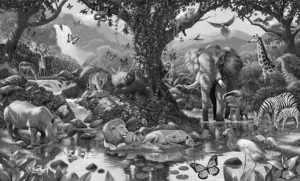
Tropical forests are known as Rain forests are the forests that occur between the equator and the two tropics. The temperature is maintained between 20°C and 34°C. They receive rainfall throughout the year. Annual rainfall is about 200cm. Different types of flora and fauna occur in these forests.
Temperate forests occur in Northeast Asia, North America, and Central Europe. Temperature ranges between -30oC to 30oC. Annual rainfall is about 150cm and is received throughout the year. The summer season is demarcated from the winter season. Trees are deciduous trees.
Boreal forests are also called Taiga forests. These forests are scattered over many places which include, China, Canada, Russia, Northern Japan, etc. Temperature ranges between -50oC to 30oC. Annual snowfall ranges from 40 to 100 cm.
b) Grasslands
These are mainly covered by long and thick grasses. Temperature ranges between -20oC and 30oC. Annual rainfall they receive varies between 50cm and 90cm. Animals like zebra, giraffe, lion, and elephant are prevalent
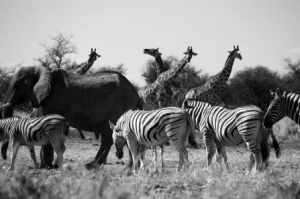
c) Deserts
These are the areas that receive scanty rainfall. These are dry with sand covering the whole region. Deserts are mostly hot regions but some of them are even too cold regions. Temperatures are too high during day time and too low during night time. Annual rainfall is less than 25 cm. Animals like camel, rattlesnake, kangaroo rat are found in deserts. Plants like cactus and thorny plants are prevalent.
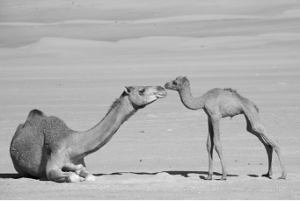
d) Mountains
These regions are rocky and dry. Sometimes water occurs as flowing streams. Plants present on hills are xerophytes. These are conical and evergreen. Many climbers are found covering the huge trees. As the height of the mountain increases, temperatures fall down and animals are adapted to live in those cold conditions. Winds are dry and cold. Animals like Yak, bear, hill goats, flying fox are the examples.
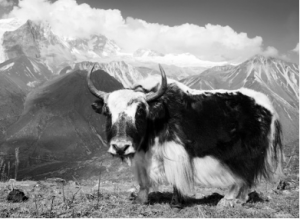
e) Polar region
These regions are covered with high snowy peaks. Animals found here are adapted by having thick furry coat on the skin. They also have a layer of fat under the skin. This fat is used as reserved food during ice-cold winter. Animals like polar bears, seals, foxes are seen. Penguins are seen standing in the ice. Fish are adapted to live in ice-cold water.
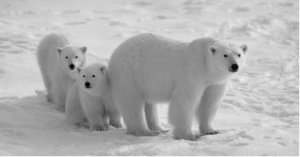
II. Aquatic habitat
It refers to the region covered with water where plants and animals survive. Aquatic habitat is further divided into freshwater habitat, marine habitat and coastal habitat. Water is the medium for the organisms living in aquatic habitats.
a) Freshwater habitat:
These are the water bodies filled with fresh water. These include rivers, lakes, ponds, streams etc. Water present has very low concentration of salts. Plants growing in water are called as hydrophytes.

b) Marine habitat:
Ocean and seas are termed to be marine habitat. These are full with life. Different varieties of organisms exist in marine habitat. Organisms like, corals, shelled animals, sponges, jelly fish, sharks and many others are found in this habitat.
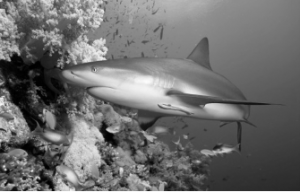
c) Coastal habitat:
This is the region represented by the place where land meets the sea. Estuaries are formed when the saltwater mixes with freshwater. These habitats are unique Special type of trees called as mangroves are found in this region. Animals are also well adapted to live in these regions.
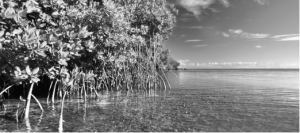
Adaptations
The ability of living organisms to adjust themselves to the surroundings is called as adaptation. Adaptations are the changes in structure or behaviour of an organism that will allow the organism to survive in that habitat. Plants and animals make some natural adjustments in some features to fit themselves into their environment. Different living organisms adapt themselves to their habitats in different ways. Adaptations can be brought about by changes in the body, changes in the behaviour and changes in location.
Acclimatization:
The ability of an organism to make small adjustments or changes in the body in a short period of time to adjust itself to the surrounding atmosphere is called acclimatization. People who visit mountain ranges suffer from altitude sickness due to poor oxygen content in the atmosphere at such heights. Their body gets adjusted or acclimatized to changes in the surroundings.
Components of a habitat
The components in a habitat are broadly classified into two types, namely biotic and abiotic components. Biotic components interact with abiotic components to obtain all the necessary conditions.
Biotic components include all the livings organisms in a habitat, i.e. plants, animals and microorganisms.
Abiotic components include all the non-living things in a habitat, i.e. air, soil, water, sunlight and temperature. The favourable conditions for survival of living organisms are provided by abiotic components.
a) Air:Air is essential for all the living organisms on earth. Plants and animals take in oxygen from the air during respiration. Plants take in carbon dioxide during the process of photosynthesis. Air also provides nitrogen which is fixed to the plants for utilisation. Air is required by organisms to cool their body. Winds help in generating energy. Winds also help in carrying the seeds for distant places.
b) Soil:Soil is the topmost layer of the earth. Soil is rich in minerals and microorganisms which help in different ways for plant growth. Soil also possesses certain spaces which lodge water particles. This water lodged in the spaces is used by plants by the process of absorption.
c) Water: Three-fourths of our earth is covered with water. Water is essential for life. Water forms a medium for many metabolic reactions taking place inside the body. Water can be fresh water or marine water. Animals living in water are called as aquatic organisms. Plants specially living in water are called as hydrophytes. Humidity and rain are also the forms of water which help the living organisms.
d) Sunlight: Sun is the ultimate source of energy for all the living organisms on earth. Plants depend on sunlight for synthesizing their food by the process of photosynthesis. Animals depend on plants for their food i.e. indirectly they depend on sunlight.
e) Temperature: Temperature at a place depends on the sunlight available at the particular place. Temperature also influences the humidity of that particular place. Areas may be too hot, moderate or too cool. Some animals hibernate during cool winter and some of them aestivate during hot summer.
3. TYPES OF HABITAT
I. Terrestrial habitat
All the deserts, mountains and forests and grasslands are included under terrestrial habitat.
(a) Desert: Camels show different adaptations to live in deserts. They possess long legs, long eyelashes, covered nostrils, special fat cells, modified cells in the stomach as adaptations.
Snakes and rats live in burrows and come out only during the night when it is cool.
Plants present in the forest are xerophytes or desert plants exhibit some adaptations to live in the desert conditions. Leaves are reduced to spines. Stems are green and fleshy to carry out photosynthesis and to store water. Roots grow deep into the soil to absorb water. The reduced leaf and the thick waxy layer of stem minimize transpiration.
(b) Mountain region: Most of the trees in cold mountains are cone shaped. The leaves are very thin and needle-shaped to slide off the snow and rain water immediately.
Animals in mountain areas have long thick skin to protect themselves from cold climate They possess strong hooves to run easily.
(c) Grasslands: Lions living in the forests possess skin colour so as to match their environment. They hide themselves in grasslands to catch their prey. They possess strong claws and teeth to tear the food. They have sharp eyesight.
Deer possess long ears to have sharp hearing sense. Deer possess eyes on the side of its head which makes it look in all directions. They have long legs to run fast.
II. Aquatic Habitat
All the fresh water and marine water bodies are included under aquatic habitat
Fish possess have streamlined bodies, which reduce friction and allow them to move freely in water.
Sea animals like the octopus and the squid do not possess streamlined body as they stay deep inside the ocean. They have the ability to make their body streamlined when they move in the water.
Aquatic animals possess gills that help them to absorb the dissolved oxygen from water. Dolphins and whales possess blowholes to breathe in air from atmosphere directly. Aquatic plants have much smaller roots which are mostly free floating. Stems are long and light. Leaves in submerged plants possess ribbon – like leaves which allow the plants to bend themselves in the direction of the flowing water.
Frogs are amphibious in nature. i.e a frog can live both in water and on land. Frogs have strong hind legs to hop on land and webbed feet to swim in water. Frogs also have a protective membrane called the nictitating membrane on their eyes.
4. LIVING AND NON LIVING THINGS
I. Life
There are millions of different things in the world around us. Some of them are alive and some are not. People, cats, mice and flowers are alive, but rocks, water, chairs and tables are not.
How can you tell a living thing from something that is not alive?
In this chapter, we will study the characteristics of the living things, so that we can answer this question. Also, whether there are any common features between living and nonliving things?
Let us look at the following Figure.
Comparison of activities in a plant and a stone
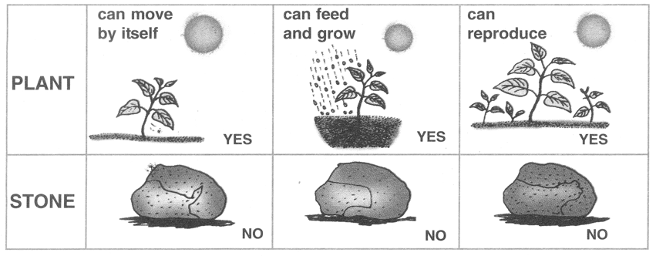
What does it show?
It shows comparison between a plant and a stone. This comparison also shows that these two objects differ in some respects; A stone cannot move on its own, does not eat food, cannot grow or produce more of its type. On the other hand, a plant shows all these features — it can move by itself, it can feed itself; it grows and produces more of its type (reproduces).
What will you find if you make comparison between an animal like a dog and the stone?
II. Common Feature Of Living and Non Living Things
All these things possess mass, shape and occupy space.
a. Both the living and the non-living things have a structural unit – cells in the living and molecules in the non-living things.
b. Cells do not exist in non-living things.
III. Differences Between Living And Non Living Things
Life is something special and unique. All we can do to define ‘life’ is to describe the observable processes or phenomena or features that distinguish living matter from non-living. Non-living things may perform one or more of these processes. For example, a crystal can ‘grow’, and a machine can ‘move’, but it is only a living organism that can perform and exhibit all the characteristics given below.
5. CHARACTERISTICS OF THE LIVING
I. Cellular Organisation
- All living things are made up of cells (Fig).
- A cell is the basic unit of life.
- Some living things consist of only a single cell. For example, Amoeba, yeast, and bacteria. Such living things are called unicellular organisms.
- Most living things, however, are made up of millions of cells. They are called multicellular organisms. For example, mango plant, rose plant, pea plant, man, housefly, dog and cat.
- Cells helps in carrying out various functions like nutrition, respiration, excretion etc. They are called the structural and functional units of organisms.
Cells in living beings.
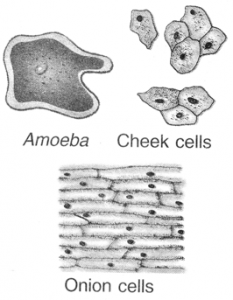
II. Nutrition
- Food is required by all living things.
- Food provides us energy so that we can perform different activities during the day.
- Food also helps in body growth as well as its maintenance and repair.
- Animals obtain ready-made food in the form of milk, bread, wheat, eggs, meat, pulses, fruits and vegetables.
- Green plants can prepare their own food.
- They obtain water and minerals from the soil.
- Roots help the plants in this job.
- Roots, in addition, perform another role of fixing the plant to the soil.
- For preparing their food, plants also require carbon dioxide.
- This is absorbed from the atmosphere (air) by the leaves through minute pores (called stomata) present on their surface (Fig).
- The green plants utilize (i) carbon dioxide from air, (ii) water and minerals from soil, and (iii) sunlight to prepare their food. This process of food preparation or manufacture is called photosynthesis.
- As the green plants can prepare their food, they are called autotrophs (auto-self; troph = food) and the mode of nutrition is called autotrophic nutrition.
- Animals, on the other hand, obtain ready-made food either from plants (wheat, pulses, fruits, vegetables and grass) or other animals (milk, eggs, meat).
- Animals, therefore, are called heterotrophs (hetero = other; troph = food) since they cannot prepare their food, and the mode of nutrition is called heterotrophic mode of nutrition (Fig.)
Presence of minute pores on leaf surface.
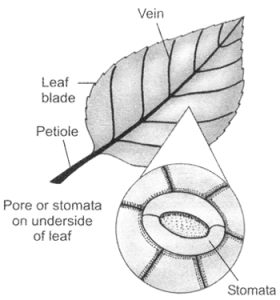
Animal eating grass.
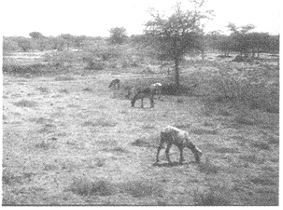
III. Respiration
- All living things respire. That is, they take in or breathe in oxygen from the air and give out carbon dioxide.
- The oxygen is used to produce energy from the food consumed by the organisms.
- The energy thus produced is utilised to perform various activities by the living beings.
IV. Growth
- Growth is a permanent and irreversible process.
- All living things grow from a single cell into an adult organism made up of billions of cells.
- The pattern of growth, however, is different in plants and animals.
- All living things grow, whereas non-living things do not grow.
- Growth, if present, in non-living things is external as it takes place by adding matter externally and it is reversible.
- Growth in living things takes place by the addition of new body material called protoplasm, and is thus internal.
Growth of a baby into an adult
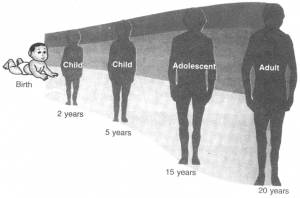
| Growth is a permanent and irreversible increase in the weight and volume of an organism. In short, growth means to become bigger and more complicated. |
V. Excretion
- Excretion is the removal of waste materials from the body.
- Accumulation of waste materials is harmful for the body.
- Waste materials are excreted mainly in the form of urine, sweat and carbon dioxide by the living animals.
- In case of plants, carbon dioxide and water vapour are excreted from small pores in their leaves.
| Excretion is the removal of waste materials that are produced as a result of the different activities which take place inside the body of an organism. |
VI. Reproduction
- All living organisms have the ability to produce young ones of their own kind (Fig). For example, a cat produces kittens who grow into adult cats.
- A hen lays eggs which hatch into chicks, finally producing hens or roosters. A mango tree bears fruits which possess seeds.
- The seed develops into a young seedling and in due course of time, into a tree. This means that living things can make more of their own kind.
- It is to be noted that non living things like table, stone, etc never reproduces like living things.
Reproduction in (a) a plant (b) a bird
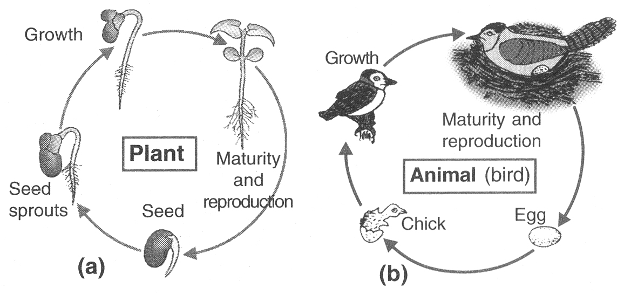
VII. Movement
- Living things show movement.
- Every day you see the animals, birds and insects moving from one place to another. Such a movement is called locomotion.
- Most plants are fixed to the soil. They are unable to carry out locomotion but show movement.
- In plants, the stem moves towards light (Fig), the roots grow downwards in the soil in search of water and in sunflower plant, the flowers change their position to face the sun.
- In small microscopic plants like the alga Chlamydomonas, the whole plant moves about in water.
Reproduction is the ability to produce young ones of their own kind. It is necessary for organisms to survive generation after generation.
Movement of plant parts (shoot) towards sunlight (phototropic)
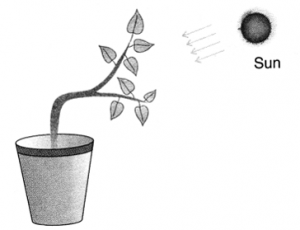
- Some animals like sponges, corals and sea-anemones do not move from place to place (Figs.).
- For obtaining food, hydra and sea-anemone have long structure called tentacles around their mouth.
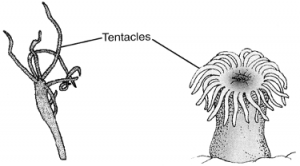
hydra sea-anemone
| Movement of animals from one point to another is called locomotion. Plants do not show locomotion. |
VIII. Response To Stimuli (Sensitivity)
- Living things respond to stimuli or changes in their surroundings.
- In cold weather, we wear woolen clothes. If our hand touches a hot object, we respond by quickly withdrawing it.
- A plant bends towards sunlight (phototropic).
- Roots grow downwards in the soil (geotropic).
- In sensitive plant, the leaves curl up on being touched by hand (Fig). Animals like cockroach and earthworm move away from light. In all these examples, responses are taking place.
- A response is an action which occurs as an answer to a particular stimulus.
- For instance, cold weather, hot object, sunlight and gravity are stimuli, as a result of which respective responses like wearing of woolen clothes, withdrawal of hand, bending of plants, downward growth of roots and moving away of animals takes place

When you touch the leaves of this plant, they will suddenly curl up.
It is known as a sensitive plant.
| Living organisms are able to respond to changes in their surroundings. The organism detects a stimulus from the surrounding and produces a response to that stimulus. Anything which produces a response in an organism is called stimulus. · A response is an activity in the living body that results from a stimulus. |
IX. Life Cycle
- Living things follow a life cycle. They start their life from a single cell.
- In animals, the life cycle consists of birth, growth, reproduction and death.
- In plants, life cycle begins through seeds or spores.
- The life cycle of an organism may take a few hours, a few days or hundreds of years to complete.
- The period during which an organism completes its life cycle is called its life span. For example, in bacteria, the life span is very short.
| LIFE SPAN OF SOME ORGANISMS | |
| Organism | Life span |
| 1. Bacteria 2. Pea 3. Pine tree 4. House fly 5. Mouse 6. Dog 7. Lion 8. Elephant 9. Humans 10. Tortoise |
20 minutes 4 months Several years 1-4 months 2-3 years 16-18 years 20-25 years 70-90 years 60-80 years 120-150 years |
| THINK IT OVER| Are There Things In Between Living And Non Living |
| Yes, the viruses are such entities existing in the universe. Viruses grow and multiply only when they are inside living things like man. Outside living bodies, they are lifeless and are just like crystal. |
| DIFFERENCES BETWEEN LIVING AND NON LIVING THINGS | ||
| Living Things | Non-living Things | |
| 1. Cellular Organisation | Are made up of cells. | Lack cellular organisation. |
| 2. Nutrition | Require food for growth and development. | Not required. |
| 3. Respiration | Show respiration. | No respiration. |
| 4. Growth | Is permanent and irreversible. | Lack growth; even if present it is reversible. |
| 5. Excretion | Removal of waste materials takes place. | No excretion. |
| 6. Reproduction | Takes place. | No reproduction. |
| 7. Response to stimuli (responsiveness) | Present. | Absent. |
| 8. Life cycle | Consists of birth, growth, reproduction and death. | Lack a life cycle. |
6. STUDY OF LIVING THINGS-BIOLOGY
I. Biology
- The study of living things or life is called biology.
- The word comes from two Greek words: bios, meaning ‘life’, and logos, meaning ‘a study’.
- Today, biologists, people who study biology, are interested in understanding the relationships that exist between man and millions of living things that surround him.
- They want to know what effect these living things have on man’s own development and the environment around.
- They fathom the icy depths of the oceans and scale the peaks of the tallest mountains. They find their way through thick jungles, and peer for hours into sophisticated instruments, in order to get at the mystery of life.
- Biology has two main divisions : (i) botany, which deals with plants; and (ii) zoology dealing with animals.
II. Micro-organisms
Some living organisms are very small in size and most of these are too small to be seen with the naked eye. These can be seen with the help of an instrument called microscope. Such tiny organisms are called micro-organisms or microbes. Microorganisms occur both in plants and animals.
Examples : Bacteria, some fungi (like yeast, Aspergillus, Penicillium), some algae (like Chlamydomonas, Oscillatoria, diatoms), and some protozoans (like Amoeba, Plasmodium).
While bacteria, algae and fungi belong to plants, protozoans are animals.
III. Differences Between Plants And Animals
1. Nutrition
- Most plants are green in colour as they possess a pigment called chlorophyll, in them.
- They can manufacture their own food using carbon dioxide, water and sunlight.
- This process of food manufacture is known photosynthesis, and the mode of nutrition is called autotrophic. Plants, being autotrophic, are also called producers.
- Animals, do not have chlorophyll, so they cannot prepare their own food.
- They depend on plants or other animals for their food.
- For this reason, animals are called consumers, and the mode of nutrition is heterotrophic.
2. Locomotion
- Plants, being fixed to the soil, do not move from place to place.
- They lack organs for locomotion.
- Animals, on the contrary, move from place to place in search of food and shelter.
- They also possess organs for locomotion such as legs, wings, etc.
- Some plants, too, can move, but only very slowly.
- Daisies and other flowers move their petals when they close them at night and open them in the morning.
- Leaves of some plants like touch-me-not suddenly curl up on being touched.
- Some plants like utrlicularia, nepenthes, trap insects.
3. Growth
- Plants have unlimited growth. In simpler words, it means that they can grow throughout their lives.
- Further, the growth is restricted or localized to certain fixed regions of the plant body such as the root tip and the shoot tip.
- Animals, however, grow up to a certain age only and stop growing thereafter.
- Moreover, they do not possess fixed growing points, and the growth is diffused throughout the body.
4. Cell Structure
- Plant cells are surrounded by a rigid cell wall.
- Cell wall is lacking in case of animal cells.
- Also, inside the plant cell are structures called chloroplasts. contain the green pigment, chlorophyll, providing green colour But the animal cell lacks chloroplasts (Fig).
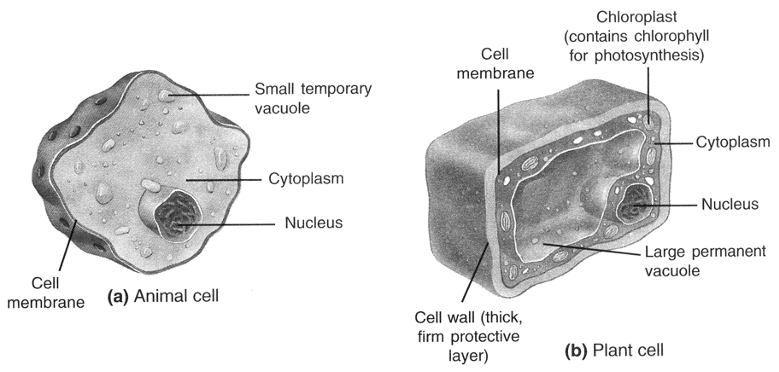
Cell structure
| DIFFERENCES BETWEEN PLANTS AND ANIMALS | |
| Plants | Animals |
| Nutrition : Most plants can manufacture their own food (they contain a green pigment called chlorophyll) — autotrophic in nutrition. | Animals cannot make their own food (lack chlorophyll) — heterotrophic in nutrition. |
| Locomotion: They are generally fixed to the soil; lack organs for locomotion. |
Show locomotion; possess organs for locomotion. |
| Growth: Growth is unlimited and localised. | Growth is limited and diffused. |
| Cell structure: Possess a cell wall; chloroplasts are present. | Lack a cell wall; chloroplasts are lacking. |








